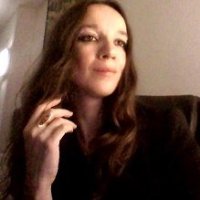About My Style
I began to draw and paint very early, and since childhood, I had my own distinct style. My art teacher was Tachat Oganesov (1922-1991), a nationally recognized artist, art historian, and lecturer at the Tashkent Theater and Artistic Art Institute.
From the beginning and in the years that followed he tried many times, rather unsuccessfully, to change my style to more traditional, ‘realistic’ techniques.
I however, felt that my art as well as my style were coming from inside me, and I chose to rely heavily on intuition – and my intuition was dictating its own style. Without that connection to ‘myself’, I felt I would lose the fluidity of work, the process of making art would break down and become confusing, slow-moving, and cumbersome.
I have also experienced migraines and auras since childhood. An aura is a neurological disturbance that may precede or accompany a migraine headache, and the condition itself often goes away. Typical auras last between five and 60 minutes but in cases like mine, the aura effect may not go away – it can persist for years. In my case it has persisted since childhood.
Eventually, my condition was identified as PMA; a persistent migraine aura (PMA) without infarction, a very rare condition in which the aura doesn’t go away, even after the onset of the actual migraine headache. One characteristic of my auras is that they consistently become more prominent before the weather changes, especially prior to thunderstorms. One to two full days before the weather changes to rain or snow, I see rain falling in front of me. For many years I didn’t understand that what I saw was not common, and in my early work, there are many depictions of auras surrounding various objects.
Yayoi Kusama , the internationally renowned artist, says that her dreamy environments with dots, mirrors, and colored lights, are inspired by the way she sees the world, due to migraine-related visual and auditory hallucinations she’s had since the age of 10. “The world I see seems to be separated by a layer of the net in pointing dots, and therefore I started to draw these nets of dots” she explained in an interview.
I myself have also seen the dots, like moving molecules, and some of my work is created with dots.
Wassily Kandinsky, Yayoi Kusama, Lewis Carroll, Giorgio de Chirico, Sarah Raphael, and other visual artists also speak of being inspired to create works of art by their migraine experiences.
In the book “A Brain Wider Than the Sky – A Migraine Diary”, Andrew Levy described some aspects of his experience that resonate with me. Paraphrasing from the book:
“The lesson is that when it comes to mind and matter, the windows really are wide open, the wind really is whipping the shutters, and the doors, in fact, are blown clean off.
Most of the time I am in charge but if this condition wants to plant moving dots where I should be seeing just a stop sign, there is nothing I can do about it but appreciate the wonder of the world I see.”
How I Create
The amount of time I sit for a session varies, but when I feel inspired, a fluidity of experience, my intuition, it’s not unusual for me to sit for 16 or more hours uninterrupted, doing the tiny detail work that’s present in many of my pieces. I do plan my work in advance, but not in detail. As I draw, the small details of the piece reveal themselves as I go. I’m as much an observer as I am a creator.
My educational background in theoretical math combined with an interest in technology also finds expression in my art. The paintings reveal my lifelong preoccupation with geometric shapes and patterns. I examine symmetry through the notion of abstraction, spatial relationships, and geometric transformations such as rotation, reflection, and scaling.
There is no linear progression of time, stillness, or singularity, but rather I am looking for a way to introduce multidimensionality and depth, to create an effect of speed and intensity, leading to a conclusion of constant change and velocity independent of the weight of the body.
I also explore color combinations; how contrasting colors could be balanced with one another, finding the harmony of colors, and how the tensions and relationships between colors can be played on the canvas. Most of my work is trying to explore the philosophical aspects of love and loss, light and darkness, hope and despair.
